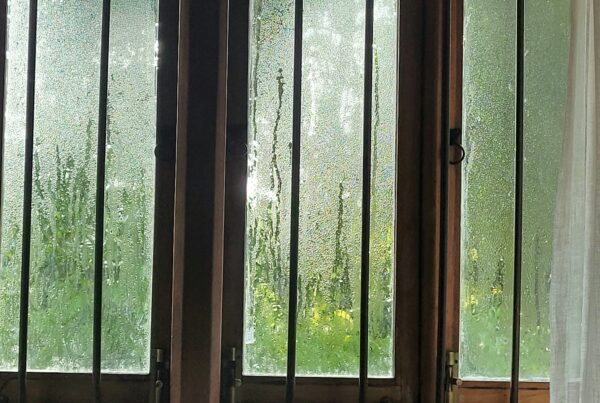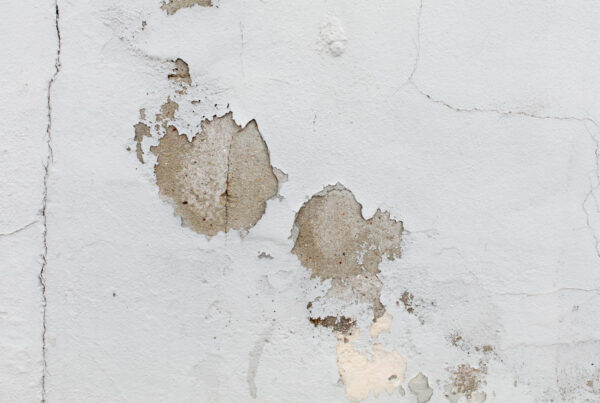Are you tired of wiping down wet windows in the morning and noticing damp patches with a musty smell that is difficult to ignore? That is condensation, which signals that your home has too much moisture.
The good news is that you can solve it with immediate action and long-term prevention. This is a guide to removing condensation and stopping it from returning permanently through proven moisture control techniques.
What Creates Condensation Problems in a Home?
Condensation forms when warm, moist air hits cold surfaces, causing water vapour to turn into liquid droplets. This happens when three conditions combine: excess moisture in your home’s air, inadequate ventilation to remove humid air, and cold surfaces that provide ideal conditions for water droplets to form.
Daily activities produce additional moisture. Cooking, showering, drying clothes indoors, and even breathing release water vapour into your home’s atmosphere. When this moisture-laden air cannot escape through proper ventilation, it accumulates and condenses on the coldest surfaces – usually windows, external walls, and poorly insulated areas.
4 Emergency Steps to Remove Condensation Immediately
When you spot condensation, quick action can help prevent water damage and mould growth. Follow these immediate steps to remove visible moisture and start the drying process.
Step 1: Remove visible water from all surfaces
Use a squeegee to clear water from windows, scraping downwards into a cloth or container. For walls and window sills, use absorbent microfiber cloths to wipe away all moisture completely. A handheld window vacuum provides the fastest solution for clearing large wet windows by sucking water directly into a reservoir.
Step 2: Create immediate ventilation
Open windows on opposite sides for 15 minutes to create cross-ventilation. This rapid air exchange helps dry wet surfaces and reduces overall humidity levels by replacing damp, humid indoor air with drier outdoor air.
Step 3: Use mechanical moisture removal
Place a dehumidifier in the affected room and turn it on immediately. This is the single most effective tool for quickly reducing airborne moisture. The device actively pulls water vapour from the air and collects it as liquid, providing immediate results.
Step 4: Activate all extraction systems
Turn on kitchen and bathroom extractor fans to pull moist air out. If you lack adequate extraction, even a simple desk fan pointed at wet surfaces helps circulate air and accelerates drying.
How Can You Eliminate Root Causes to Prevent Future Condensation?
Getting rid of today’s condensation only solves half the problem. Permanent success requires addressing the underlying moisture sources, ventilation issues, and temperature factors that create condensation conditions.
Key strategies to reduce condensation causes:
- Control moisture sources – Cover cooking pots and pans, use extractor fans every time you cook or shower, and stop drying laundry on radiators
- Improve ventilation systems – Keep trickle vents open, ensure air bricks stay clear of obstructions, and install modern extractor fans where lacking
- Increase surface temperatures – Maintain low, constant background heating rather than short bursts, invest in loft and cavity wall insulation
- Create proper airflow – Pull furniture several inches away from external walls, open windows for 10-15 minutes every morning
- Address hidden moisture – Check for water leaks from pipes, under sinks, or around appliances
Our condensation solutions and expertise at Refresh can help identify specific moisture sources and recommend targeted solutions for your property’s condensation challenges.
What Should You Do About Existing Mould Growth?
Persistent condensation problems create conditions for mould growth that require safe, effective removal before implementing prevention measures. Black mould produces health risks and indicates serious moisture problems needing immediate attention.
Protect yourself during mould cleaning by wearing rubber gloves, eye protection, and face masks to prevent spore inhalation. Do not attempt to clean large mouldy areas (over 1 square metre) yourself as this releases dangerous quantities of spores.
Create an effective cleaning solution using one part white vinegar mixed with one part water in a spray bottle. Avoid bleach as it only whitens mould surfaces without killing roots and can release harmful fumes. Apply the solution to affected areas and leave for one hour before wiping away with damp cloths.
Before redecorating, make sure it’s completely dry using fans, dehumidifiers, or gentle heating. For extra protection, use anti-mould paint containing biocides that inhibit future mould growth.
How Can You Achieve Long-Term Condensation Control?
Successful condensation removal demands consistent application of moisture control, ventilation, and temperature management instead of one-time interventions.
Important maintenance practices for condensation prevention:
- Monitor humidity levels regularly – Use humidity meters and take action when readings exceed 60%
- Perform seasonal adjustments – Winter months require more attention to heating consistency and ventilation balance
- Maintain extraction systems – Clean extractor fans monthly, check for plumbing leaks promptly, and ensure ventilation openings remain unblocked
- Schedule professional inspections – Annual assessments help identify emerging condensation risks before they develop into serious problems
- Keep consistent heating patterns – Maintain steady background temperatures rather than intermittent heating that creates fluctuations
- Invest in Basement Waterproofing – Properties in London often suffer from rising damp and other moisture-related issues due to water ingress from the base of the house. Thanks to specialist basement waterproofing services in London, this can be easily rectified!
When Should You Contact Professional Condensation Specialists?
Professional assessment is needed when DIY methods fail to resolve persistent condensation problems or when underlying structural issues contribute to moisture accumulation.
Contact specialists like us at Refresh if condensation appears widespread, returns quickly after removal, or accompanies other dampness signs like structural damage or persistent musty odours. Health considerations also need professional intervention if people experience respiratory symptoms correlating with condensation problems.
Remove Condensation Problems Promptly With Expert Solutions From Refresh
Getting rid of condensation needs quick action to remove existing moisture combined with long-term strategies that address the root causes of humidity problems. Our condensation specialists understand how moisture affects London and other UK properties and provide comprehensive solutions that deliver lasting results.
Our condensation treatment solutions combine emergency moisture removal techniques with professional assessment of underlying causes. We help property owners permanently remove condensation problems through targeted ventilation improvements, moisture source identification, and with heating efficiency. Contact us for professional condensation removal and prevention services that work.



